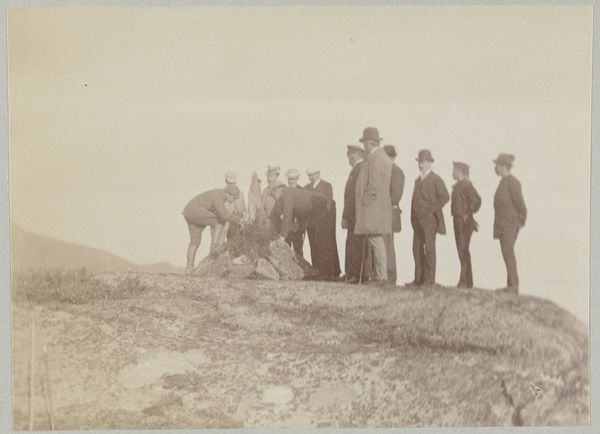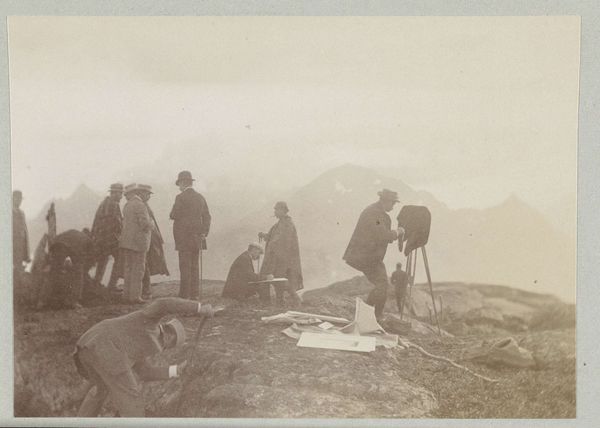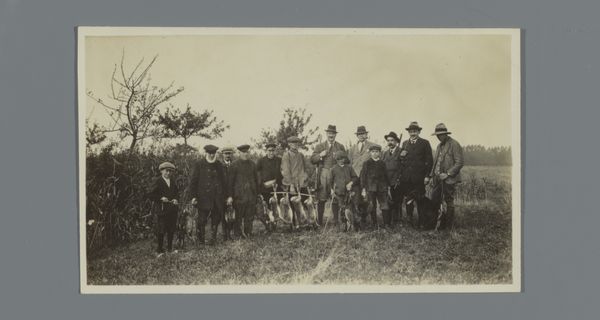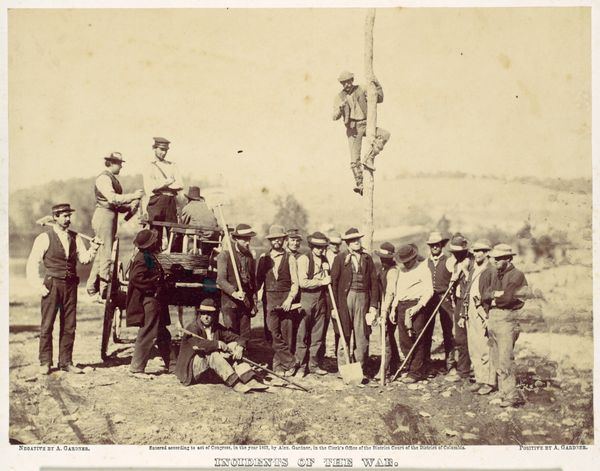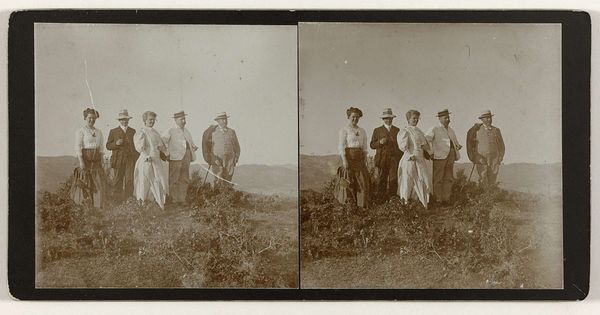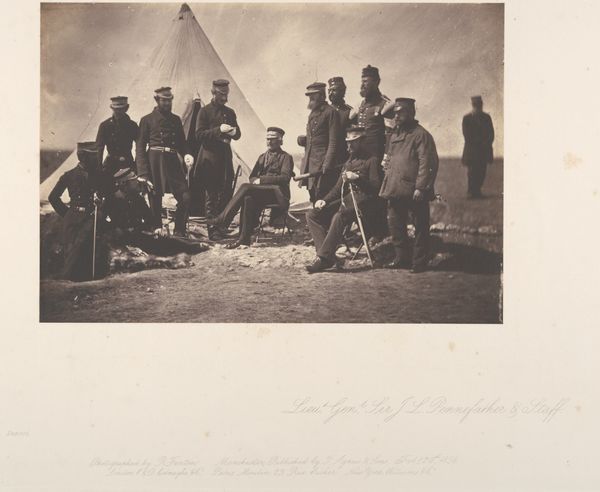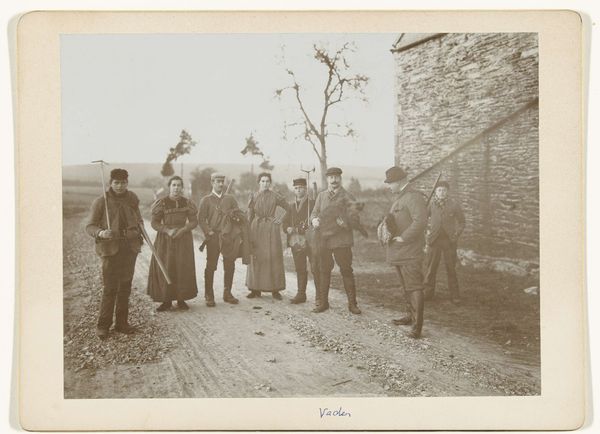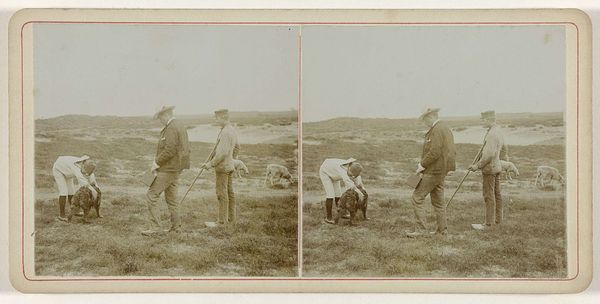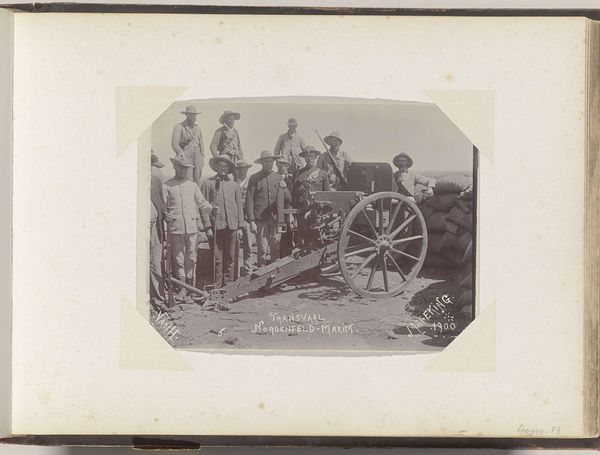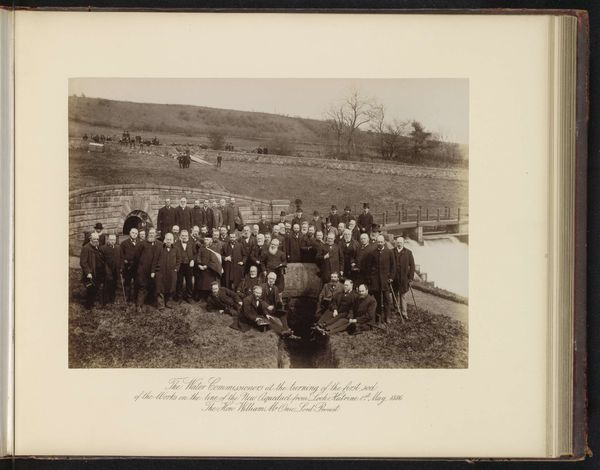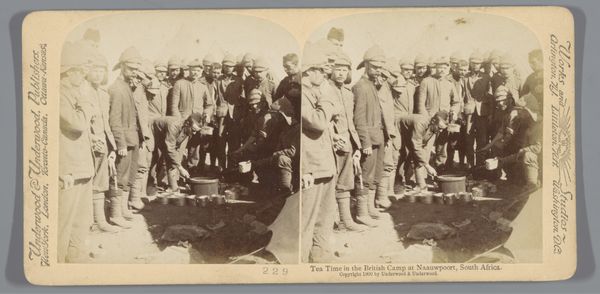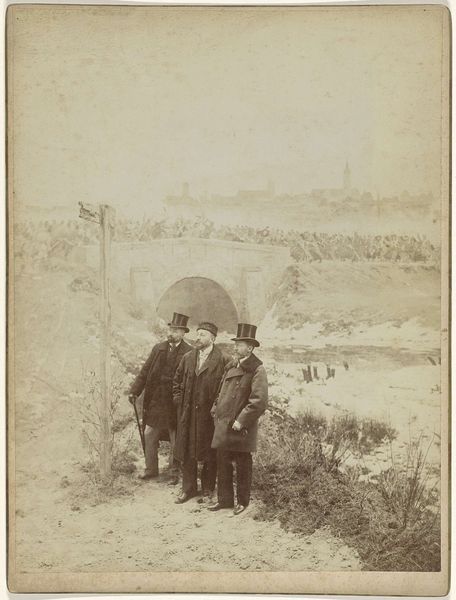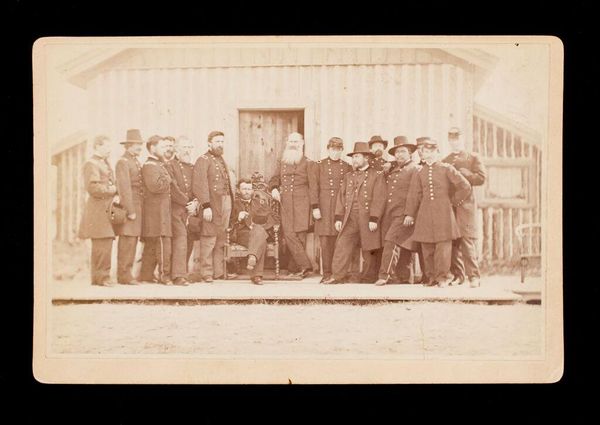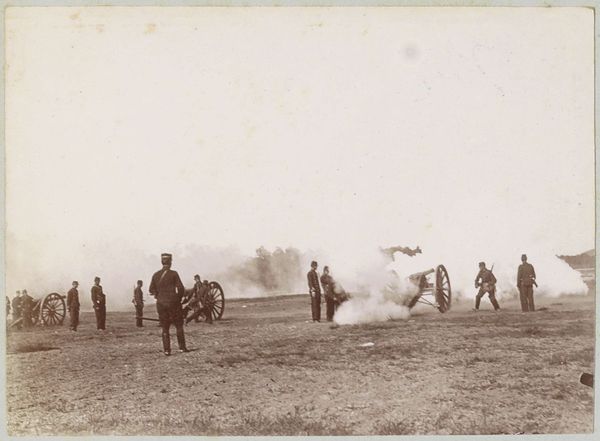
Keizer Wilhelm II met zijn reisgezelschap in het Noorse landschap bij uitkijkpunt in Lofoten 1889
0:00
0:00
photography, gelatin-silver-print
#
impressionism
#
landscape
#
archive photography
#
photography
#
historical photography
#
group-portraits
#
gelatin-silver-print
Dimensions: height 80 mm, width 112 mm, height 314 mm, width 450 mm
Copyright: Rijks Museum: Open Domain
Curator: Here we have a photograph dating from 1889, "Keizer Wilhelm II met zijn reisgezelschap in het Noorse landschap bij uitkijkpunt in Lofoten" or, "Kaiser Wilhelm II with his travelling companions in the Norwegian landscape at a vantage point in Lofoten." It's attributed to Paul Gussfeldt, and presented as a gelatin silver print. Editor: It feels stark, almost alienating. The group of men huddled together looks almost insignificant against that vast, pale sky. Curator: Indeed. Consider Wilhelm II's imperial ambitions at the time, and the backdrop of Norwegian wilderness becomes a commentary. His desire to project power contrasts sharply with the humbling reality of nature's scale. Are they claiming dominion, or are they diminished by the landscape? Editor: It’s interesting you mention dominion. I keep circling back to what they're actually looking *at*. The almost ritualistic posture some of them adopt in looking at the landmark. It seems as if it functions as a potent symbol in that landscape. I wonder what the symbolic weight of this place was prior to the Kaiser's visit? Curator: Precisely. Historical context reveals Wilhelm II’s penchant for staging these kinds of symbolic encounters. Norway, a land of Vikings and sagas, was deeply romanticized in the late 19th century as the very cradle of the Aryan race. Wilhelm II traveled there every year, to stage photographs that created his image of strength. Editor: Ah, the staging certainly reframes the entire image! Did Wilhelm select this area because the point offered some form of pre-existing symbology for power? The vantage point suggests hierarchy too; Kaiser Wilhelm literally gazes down on the rest of the world. Curator: A point well-taken, since even their attire—formal suits in the rugged terrain—serves as a marker of cultural and societal distinction, which adds another layer to the narrative. This photograph isn't simply a record; it is carefully constructed propaganda of imperial prowess against the canvas of what Wilhelm thought of the Nordic lands. Editor: So it's more than just a group of men on a hilltop. It’s about manufacturing and shaping cultural memory. Curator: Precisely! The careful composition hints at performative aspects. A narrative designed to bolster the Kaiser’s image and his association with a romanticised, imagined lineage of northern European power. Editor: Seeing it this way enriches the narrative far beyond a simple landscape shot.
Comments
No comments
Be the first to comment and join the conversation on the ultimate creative platform.
